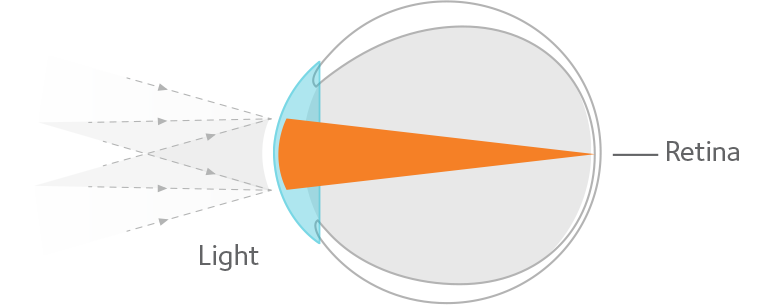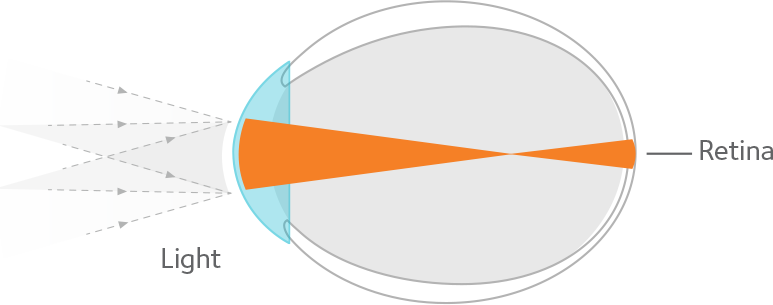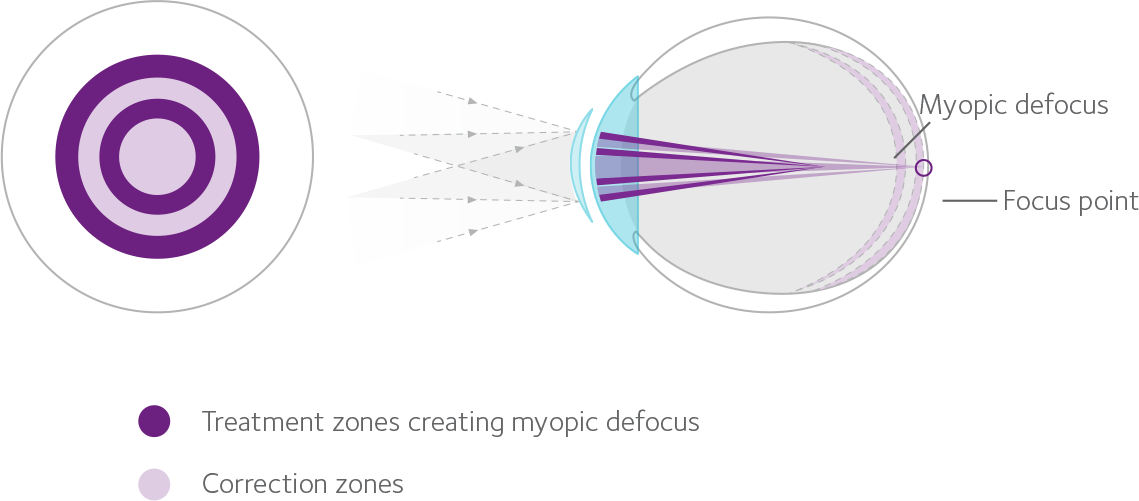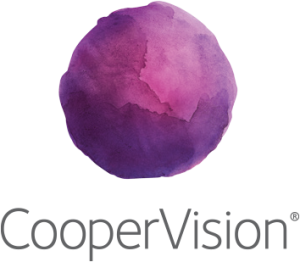
A closer look at your child’s nearsightedness
WHAT IT IS
Nearsightedness, also known as myopia, happens when your child’s distance vision begins to blur because their eyeball is becoming longer as they grow.

non-myopia eye

myopia-eye
WHAT CAUSES IT
Myopia is on the rise — in its frequency and its severity.1 The reason for its escalation has been linked to two factor2:
MiSight® 1 day: first and only soft contact lens FDA-approved* to slow the progression of myopia in children, aged 8-12 at the initiation of treatment1
OVERVIEW:
CooperVision’s MiSight® 1 day is the first and only contact lens FDA-approved* to slow the progression of myopia in children aged 8-12 at the initiation of treatment1. Children can apply the soft, daily wear, single use contact lenses to their eyes in the morning, wear them for at least 10 hours during the day, then dispose of them in the evening.
The FDA-approved* lens is available as part of a comprehensive myopia management approach offered by CooperVision and participating eye care practitioners.
HOW IT WORKS
MiSight® 1 day is an award-winning2,3,4 dual-focus soft contact lens that uses ActivControl™ Technology to slow the elongation of the eyeball1. The ActivControl™ Technology in MiSight® 1 day utilizes an optic zone concentric ring design with alternating vision correction and treatment zones. Two zones are vision correction zones with the label power of the contact lens, and the alternating two zones are treatment zones with 2 diopters of defocus to slow the progression of myopia.
This design allows the child to see clearly while benefiting from the treatment effect.

CLINICALLY PROVEN – FIVE YEARS OF DATA
CooperVision undertook a rigorous, multi-year, multi-country study to track how the MiSight® 1 day contact lens affected myopia progression in children aged 8–12 at the initiation of treatment5. After three years, the study concluded the lens effectively slowed myopia progression by an average of 59% and slowed the rate at which the eye lengthens by an average of 52% compared to children in the control group wearing a single-vision 1-day lens.5 Results presented after the five-year mark continued to demonstrate safety and efficacy.6
“ After three years, the study concluded the lens effectively slowed myopia progression by an average of 59% and slowed the rate at which the eye lengthens by an average of 52% compared to children in the control group wearing a single-vision 1-day lens.5 ”
EASE OF FITTING, WEAR, AND CARE
Incorporating this technology into a 1-day disposable lens was based on the safety profile of lenses that are discarded after one day of use, as well as children’s ease of use and parental peace of mind. For children and parents, a multi-center study found:
of children in the study preferred wearing MiSight® 1 day lenses over wearing eyeglasses5,6.
of children could apply and remove the MiSight® 1 day lenses on their own5,7.
of parents reported their children were happy with their experience wearing contact lenses. They noted the comfort, vision, ease of use, and freedom from eyeglasses as top benefits1,8.
PROGRAM COSTS AND DETAILS
Dr. Schultz is certified for the treatment of myopia with MiSight.
Please contact our office for more information and to schedule a consultation.
More than just vision correction, myopia management can help keep their futures brilliant.
- Corrects distance vision immediately3
- Can slow myopia progression during the growing years1
- A comfortable experience4
- No glasses to lose or break
- Accommodates a more active lifestyle4

Schedule a follow-up appointment today to learn more about myopia management.

1. Holden BA, et al. Global Prevalence of Myopia and High Myopia and Temporal Trends from 2000 through 2050. Ophthalmology. 2016;123(5):1036-42. 2. What You Should Know if Your Child is Nearsighted (Infographic). Retrieved October 29, 2019 from: https://www.allaboutvision.com/parents/myopia-facts-infographic.htm. 3. Rah MJ, et al. Vision specific quality of life of pediatric contact lens wearers. Optom Vis Sci. 2010;87(8):560-6. 4. Walline JJ, et al. Benefits of contact lens wear for children and teens. Eye Contact Lens. 2007;33(6 Pt 1):317-21.
* Indications for Use: MiSight® 1 day (omafilcon A) soft (hydrophilic) contact lenses for daily wear are indicated for the correction of myopic ametropia and for slowing the progression of myopia in children with non-diseased eyes, who at the initiation of treatment are 8-12 years of age and have a refraction of -0.75 to -4.00 diopters (spherical equivalent) with ≤ 0.75 diopters of astigmatism. The lens is to be discarded after each removal.
References: 1. Compared to a single vision 1 day lens over a 3 year period. Chamberlain P, et al. A 3-year randomized clinical trial of MiSight® lenses for myopia control. Optom Vis Sci. 2019; 96(8): 556-567. 2. British Contact Lens Association (BCLA) (2019, May 17). Retrieved October 2, 2019, from https://www.bcla.org.uk/Public/News/Press_Release/Finalists-unveiled-for-2019-BCLA-Awards.aspx. 3. La liste des nominés aux 26e SILMO d’Or. (2019, September 25). Retrieved October 2, 2019,from https://en.silmoparis.com/Silmo-d-Or-Awards/Nominees-2019. 4. Optician. (2018, April 4). Optician Awards 2018: Black ties and glittering prizes. Retrieved October 2, 2019, from https://www.opticianonline.net/news/optician-awards-2018-black-ties-and-glittering-prizes.
References: 5. Compared to a single vision 1 day lens. Chamberlain P, et al. A 3-year randomized clinical trial of MiSight® lenses for myopia control. Optom Vis Sci. 2019; 96(8): 556-567. 6. CooperVision data on file 2019. How much do you like wearing your contact lenses? 87/97 (90%) Top box ‘I like contact lenses the best’ Subjective response @60M. 7. As reported by parents. 8. CooperVision data on file 2018. Overall experience as defined as children’s comfort, vision, lens handling, and freedom from spectacles. Children aged 8-15 years. 3-year study report.
©2020 CooperVision 10267 12-20


